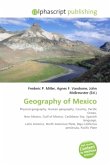The geography of Cyprus entails the physical and human geography of Cyprus, an island country situated in the Eastern Basin of the Mediterranean Sea. The third largest island in the Mediterranean (after the Italian islands of Sicily and Sardinia) and the world's 81st largest, it is located south of the Anatolian peninsula (Asia Minor), or modern-day Turkey, of the Asian (or Eurasian) mainland. As such, it may be included in Western Asia or the Middle East: At a confluence of Western Asia, Southern Europe, and Northern Africa, Cyprus has had lengthy periods of mainly Greek and intermittent Anatolian, Levantine, Byzantine, and British influences. It is sometimes included in Europe, and has been a member of the European Union since 1 May 2004. Cyprus measures 240 kilometres latitudinally and 100 km (62 mi) longitudinally, with Turkey 75 km (47 mi) to the north. Other neighbouring territories include Syria and Lebanon to the east (105 km and 108 km (67 mi), respectively), Israel 200 km (124 mi) to the southeast, Egypt 380 km (236 mi) to the south, and Greece to the west-northwest: 280 km (174 mi) to the small Dodecanesian island of Kastellórizo (Meyísti), 400 km (249 mi) to Rhodes, and 800 km (497 mi) to the Greek mainland.
Bitte wählen Sie Ihr Anliegen aus.
Rechnungen
Retourenschein anfordern
Bestellstatus
Storno








